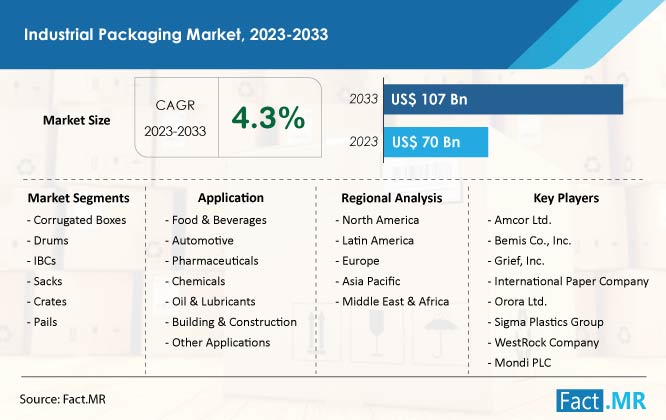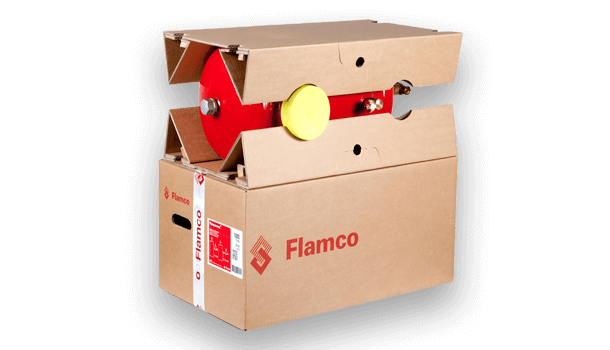Metallic May: Industrial Metal Packaging Solutions Redefined
Wiki Article
Efficient Industrial Recycling Solutions for Sustainable Packaging: A Comprehensive Guide
That's where this comprehensive overview on efficient commercial recycling options for sustainable packaging comes in. By exploring essential locations such as packaging product selection, creating for recyclability, implementing recycling framework, collaborating with reusing partners, and monitoring and gauging reusing success, this guide will equip you with the understanding and devices necessary to make educated decisions and drive positive change within your organization. Whether you're a packaging specialist, sustainability manager, or just interested in the topic, this guide will give important understandings and strategies to aid you navigate the world of sustainable product packaging.Product Packaging Product Selection
The choice of packaging materials plays a critical role in guaranteeing the sustainability of commercial recycling solutions. The selection of materials is key in reducing environmental impact and making best use of reusing effectiveness when it comes to sustainable product packaging. Selecting the ideal products can help in reducing waste generation, conserve sources, and advertise a round economic situation.Products like cardboard, paper, glass, and particular types of plastics can be reused several times without shedding their high quality. On the other hand, materials that are challenging to reuse, such as non-recyclable compounds or combined plastics, can develop challenges for the reusing process and may end up in incinerators or garbage dumps.
One more consideration is making use of naturally degradable and eco-friendly materials. Packaging made from sustainable sources, such as plant-based plastics or biopolymers, can help in reducing dependency on nonrenewable fuel sources and minimize climate adjustment. Furthermore, biodegradable products break down normally over time, minimizing the accumulation of waste in land fills.
Additionally, the weight and volume of product packaging materials ought to be lessened to minimize transportation expenses and power intake. Light-weight products not only call for less resources during manufacturing but also add to reduce carbon emissions during transport.
Creating for Recyclability
Product packaging developers ought to focus on the usage of products that are widely approved for reusing and have actually developed recycling infrastructures. Products such as glass, aluminum, and particular kinds of plastic, like Family pet and HDPE, are commonly reused and ought to be chosen over products that are hard or pricey to reuse.One more vital consideration in making for recyclability is the removal of unnecessary components or materials. By decreasing the number of layers, coverings, and added elements, product packaging can be made simpler and simpler to recycle. Furthermore, designers should aim to reduce the usage of blended materials, as they can complicate the recycling process.

Implementing Recycling Framework
Effective application of recycling facilities is essential for the success of commercial reusing options. Without appropriate infrastructure in position, the reusing procedure ends up being ineffective and inadequate, preventing the overall goal of sustainable product packaging.To carry out recycling infrastructure properly, numerous key variables require to be taken into consideration. There should be a well-organized collection system that facilitates the splitting up and collection of recyclable materials. This can include designated recycling bins in public areas, in addition to collaborations with waste administration companies for curbside pick-up and sorting.
Once gathered, the recyclable products need to be carried to reusing facilities in a prompt way. This requires effective logistics and transportation networks, ensuring that the products reach the proper facilities right away.
At the reusing centers, progressed sorting and handling technologies ought to be in area to separate various sorts of materials efficiently. This consists of making use of automated arranging equipments, optical scanners, and manual sorting methods.
Additionally, there need to be a durable market demand for recycled materials. This can be achieved via cooperations with suppliers and industries that use recycled materials in their production processes. Developing a secure market for recycled products incentivizes the reusing industry and advertises the circular economic climate.
Collaborating With Recycling Partners

One trick element of working together with reusing companions is the facility of clear interaction networks. It is very important to establish open lines of communication to assist in the exchange of information, updates, and responses. This enables both parties to stay informed concerning the development of recycling efforts and attend to any kind of challenges or issues that might develop.
Furthermore, partnership can involve joint efforts in developing and executing reusing programs. Recycling partners can give valuable insights and support in developing reliable collection systems and determining the most suitable recycling innovations. By collaborating, organizations and reusing partners can enhance the recycling process and reduce waste.
Additionally, partnership can prolong past the functional elements of recycling. It can also include advocacy and education efforts. By signing up with forces, companies and reusing partners can raise awareness concerning the significance of reusing and advertise the adoption of lasting product packaging methods amongst customers and various other stakeholders.
Monitoring and Measuring Recycling Success
To make certain the effectiveness of commercial reusing remedies and the success of lasting packaging goals, it is essential for organizations and their reusing companions to establish a thorough system for monitoring and determining recycling success (industrial metal packaging). Tracking and determining recycling success permits companies to analyze the effect of their recycling efforts, recognize locations for renovation, and set significant targets for future progressOne way to track reusing success is via the usage of data collection and evaluation industrial packaging solutions devices. By gathering data on the quantity of packaging waste produced, the portion of waste that is reused, and the sorts of materials being recycled, companies can acquire important understandings into their recycling performance. This data can after that be evaluated to determine trends, patterns, and locations of ineffectiveness.
An additional essential element of monitoring and measuring recycling success is establishing standard and clear metrics. This allows organizations to contrast their efficiency against market criteria and track their progress over time. Metrics such as recycling rates, waste diversion rates, and greenhouse gas discharges can offer a quantitative measure of a service's reusing success.

Verdict
To conclude, applying effective industrial recycling services for lasting product packaging calls for careful consideration of packaging product choice, developing for recyclability, executing recycling framework, teaming up with reusing companions, and monitoring and gauging recycling success. By including these techniques, services can contribute to an extra environmentally-friendly and sustainable method to product packaging, lowering waste and promoting the round economic situation.By discovering vital locations such as product packaging material option, making for recyclability, carrying out recycling infrastructure, teaming up with reusing partners, and monitoring and determining recycling success, this overview will certainly equip you with the understanding and tools essential to make enlightened decisions and drive positive change within your organization. Product packaging designers must focus on the usage of materials that are extensively approved for recycling and have actually developed recycling facilities.Cooperation with recycling companions is crucial for the successful execution of commercial recycling options and the achievement of sustainable product packaging objectives. By joining pressures, companies and reusing partners can raise understanding about the value of reusing and promote the adoption of lasting product packaging methods amongst customers and various other stakeholders.
By collecting data on the quantity of product packaging waste produced, the portion of waste that is recycled, and the kinds of products being recycled, organizations can get important insights into their reusing efficiency.
Report this wiki page